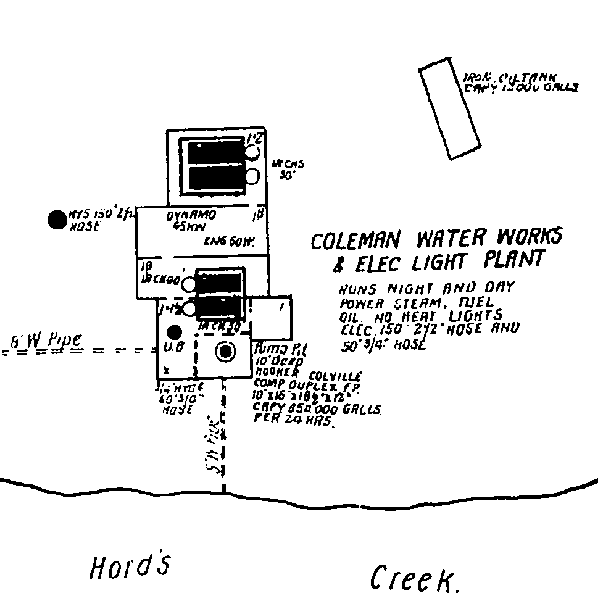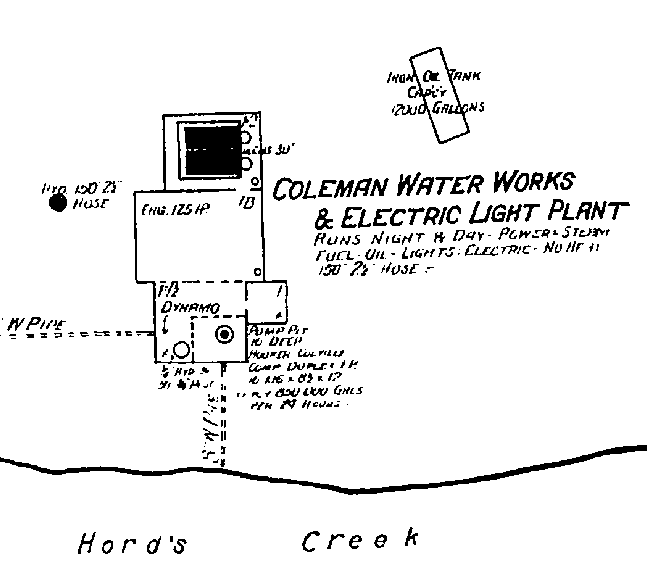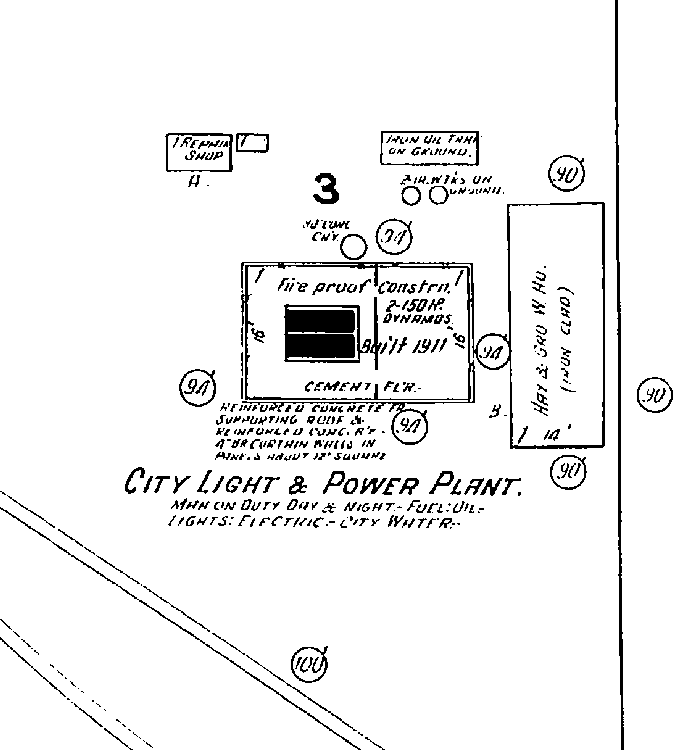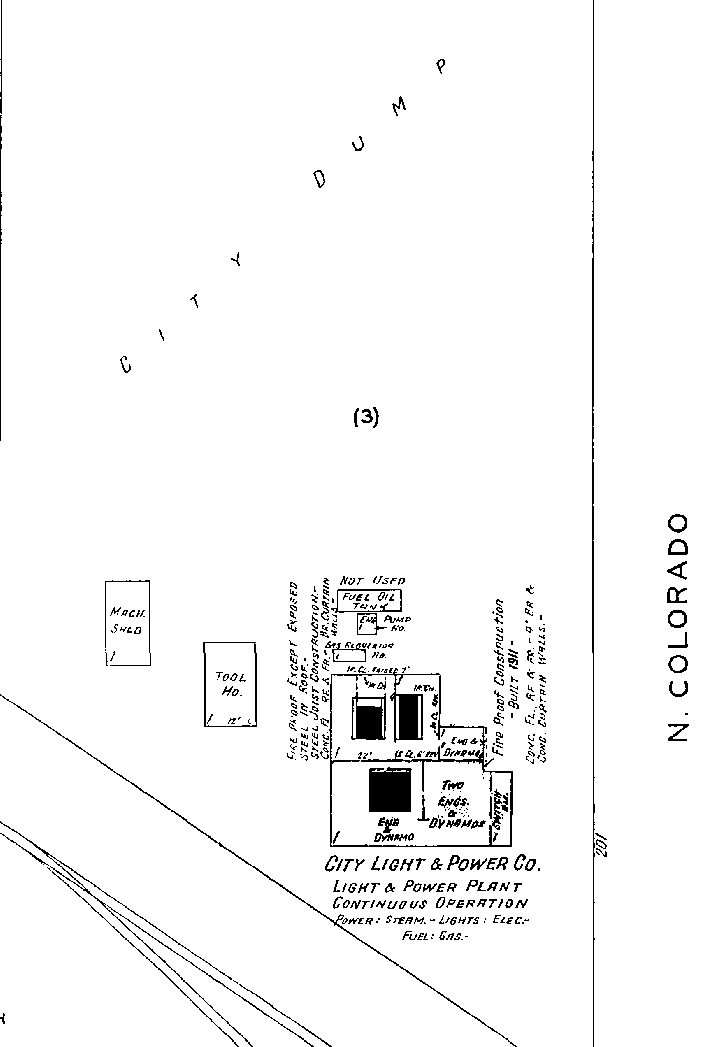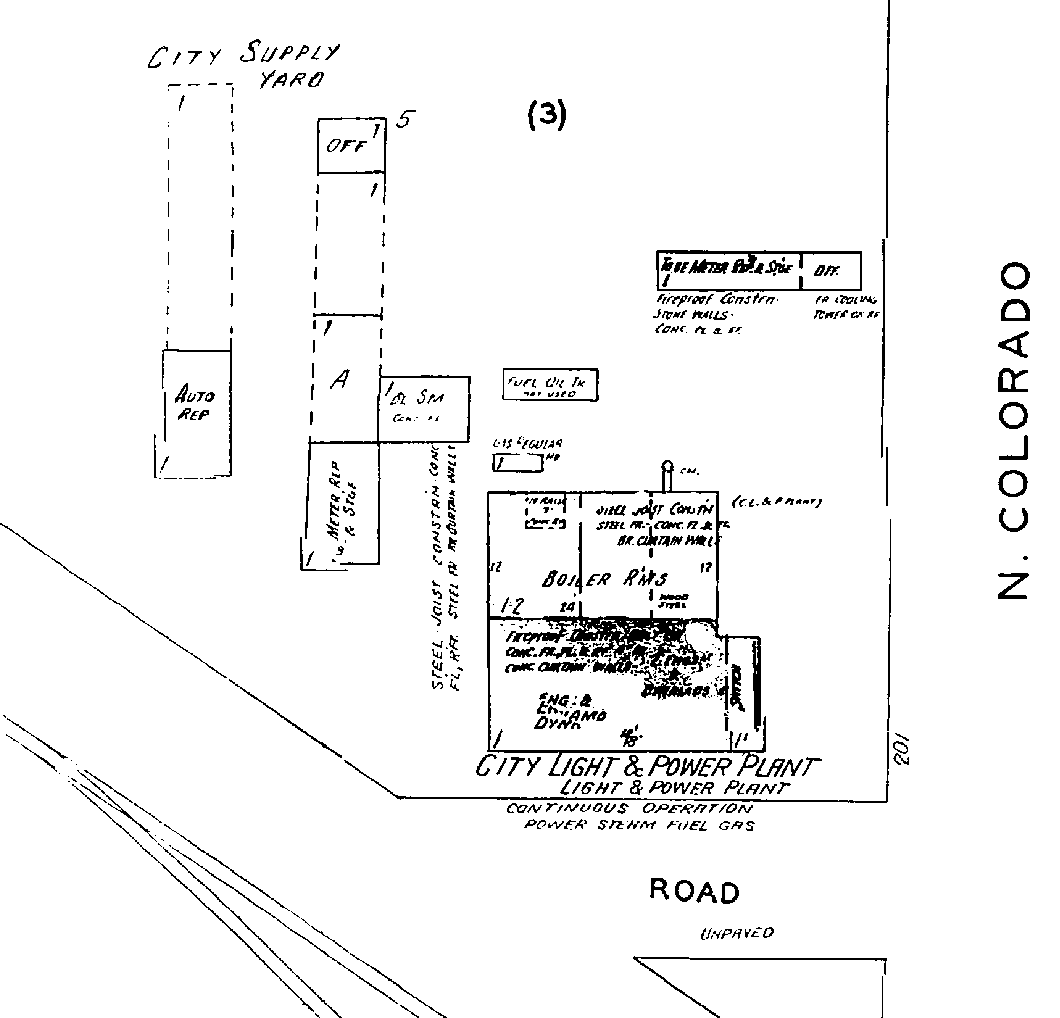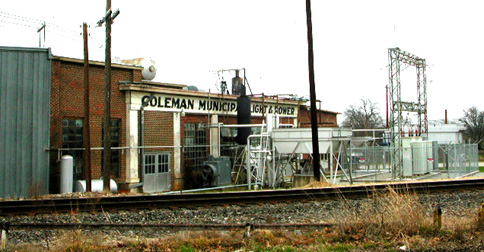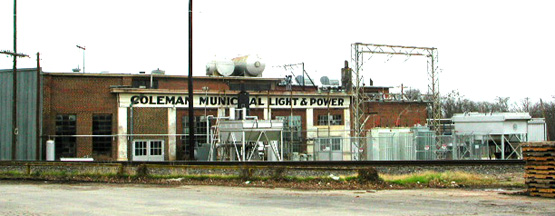After a century of
service, Coleman's power plant
officially closes
By Ken Ellsworth / Reporter-News Staff
Writer
January 31, 2005
COLEMAN - For some, today is a dark day for
Coleman as the city officially
pulls the plug on a landmark, one of the
oldest city-owned power plants
in Texas and the only city-owned power plant
in the Big Country.
Don't worry. Coleman won't be left in
the dark. The city will
continue to buy power from AEP, as it has for
several years. Coleman
Municipal Power and Light first went on line
with one small generator in
1902. In 1910, a new, red-brick building
was erected just north of
downtown to meet the increasing demand for
electricity; that is still the
site of the power plant. The 1902 plant
site was a half-mile east
of downtown on Hordes Creek.
''It was the goose that laid the golden
egg,'' said Ronnie Busby of
the Coleman plant. ''It was where all
the money came from.
It fed our families and schooled them.''
Busby has been superintendent
of the plant for the past 18 years. Roy
McCorkle, the city manager
from 1971 until he retired in 1994,
agreed. ''It was the Golden Goose,
and that's what we called it,'' McCorkle
said. ''For a long time,
we had a tax rate of about 5 cents (per $100
valuation), and we had a mayor
back then whose main goal was to make Coleman
tax-free.'' The city
didn't achieve that goal, but the profits from
producing electric power
allowed Coleman mayors to dream. The tax
rate is now 31.1 cents,
still lower than most cities in the
region.
The cost of fuel and other factors have made
the old plant unprofitable.
The city can buy power cheaper than it can
produce it, said City Manager
Randy Whiteman. The plant, in fact, has
not produced electric power
for the past three years, he added. For
those three years, the city
had a contract with AEP to provide electric
power to AEP if they needed
it, Whiteman said. During those three
years, AEP asked for power
only once, and even then, a technical problem
at the Coleman plant prevented
the power from being produced, he said.
''There is no way we can
compete,'' Busby said.
Whiteman said that through attrition the
number of employees at the
idle plant dwindled to four. ''That's
not enough to run the plant,
and it didn't make sense to hire more,'' he
said. ''It wasn't realistic
anymore to think we could supply power to AEP
if they asked for it.''
Three of the last four employees have found
other work. Busby will
stay on for now and try to find buyers for the
generating equipment.
Nobody knows what might happen to the
building. Some of the structure
may have to be torn down to remove the huge,
iron generators if buyers
are found, Busby said. Most of the nine
generators are about 10 feet
tall, 15 feet long and 5 feet wide. The
crankshaft alone on the largest
generator weighs 150,000 pounds. When
the generators ran at capacity,
they could heat the concrete floor of the
building to 160 degrees and create
enough noise to require ear protection, Busby
said.
''Building a light house was first mentioned
by the City Council on
March 11, 1901,'' said McCorkle, who has
studied the council's old, detailed
minutes. ''They're so detailed because
the city secretary was paid
by the word,'' he added. In March 1902,
the council hired an engineer
for $132 and accepted a bid of a $7,250 to
provide a 60 kilowatt-hour steam-powered
dynamo. That would have created enough
power to light 600, 100 watt
light bulbs for one hour. The council also
bought three street lamps.
In 1904, the city bought a 90 KW unit to meet
the increasing demand for
electricity. Coleman had a population of
about 1,000 in 1902, but
grew to more than 3,000 by 1912. Its
population was 5,127 in 2000.
At first, residents did not have electric
meters, and residents were
charged about 50 cents a month per light
bulb. Residents who had
more than two bulbs were charged 25 cents for
each extra bulb. The
power plant ran only at night, when the lights
were needed. In 1911,
after the new plant had gone on line, ladies
were allowed to iron on Tuesdays
and Thursdays, and only between the hours of 1
p.m. and 3 p.m. The
power output of the plant was constantly
upgraded, and it provided all
the power for the city until 1973, when the
city joined the regional power
grid and began exporting power, Busby
said. The last of nine internal
combustion generators was installed in 1986,
he said. Busby said
that when the plant was producing at full
output seven days a week, it
employed nine.
Taking the plant offline will mean little to
Coleman residents in practical
terms. The city will continue to buy AEP
power wholesale and redistribute
it through the city-owned electric
infrastructure, Whiteman said.
Customers will still pay electric bills to the
city, he said. In
1902, the Coleman City Council demanded in
writing that their first electric
power plant ''shall be first class in every
detail.'' Most residents
believe the ''Golden Goose'' met the
requirements of that demand by laying
golden eggs for more than a century.
|
